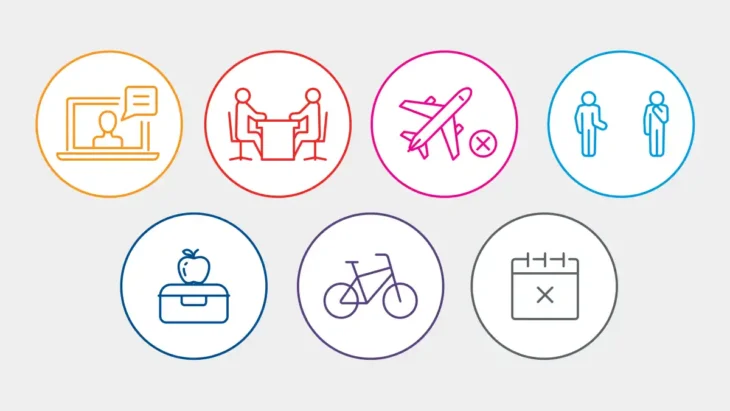Customers have come to have lofty expectations when they order products online. At the onset of the eCommerce store phenomenon, the convenience of shopping from your own home and having items delivered without using gas to get to the store set new precedents.
The higher the threshold set, the greater expectations become and that is precisely what happened when Amazon took the world by storm. Amazon is responsible for creating an expectation for free shipping, and they wiped out the competition by compelling their sellers to offer the lowest selling price online.
Over the past two years, the pandemic has turned even the last few hesitant stragglers into online shoppers. Demand for high quality at a low price with great customer service is expected or you just won’t survive. To stay ahead, you need to work with order management software like SOS Inventory to manage your orders and provide quick access to order information to your team. Naturally, Amazon was ahead of the game and secured an even greater portion of the market.
Contents
Recent Challenges for the Growing Small Business

Source: uschamber.com
1. Selling on Multiple Online Platforms
In addition to your eCommerce website, there are many different online platforms to sell products including Amazon, eBay, Etsy, Walmart, etc. Logging in to each portal to update inventory and manage sales leaves room for errors and duplication while consuming extra time. You may be importing information from one database to import to another, increasing the likelihood of mismatching SKUs. Streamlining these processes with a single platform that will move information from these platforms to a central database can save time, money and provide more accurate inventory counts. It can also help prevent shortages because your inventory counts will be real-time figures.
2. Labor Shortages
When the government began paying the unemployed more money for staying home than they were earning at work, there was little incentive for qualified workers to return to the workforce. This dilemma created a labor shortage that slowed production and increased the costs of replacing employees. Employers were pressed to increase salaries or add benefits to entice prospects to come to their companies.

Source: shrm.org
3. Supply Chain Disruptions
Prior to the pandemic, manufacturers who imported goods from international suppliers faced rising costs imposed by increased tariffs. Subsequently, many businesses turned to alternative suppliers (some domestic) to lower costs of goods. More recently, disruptions have been caused for several reasons: labor shortages, closed ports, political conflict, and transportation issues. If your business relies on a single supplier, it is more vulnerable to any conflict created by supply chain disruption. Now, more than ever before, businesses must diversify their supply chains and secure suppliers domestically located whenever possible.
4. Social Disconnection
Social distancing and regulations in some industries forced companies to stagger work schedules and reduce foot traffic to their places of operation. Getting the same amount of work done in a day with fewer people on hand was stressful, if not impossible. When productivity drops, so do profits. When you add in the stress of worrying about sanitary practices and spreading disease, everyone is more stressed out.
How can you increase profitability when you’re struggling to stay profitable? That’s been the question businesses have had to answer and for many, shuddering their doors was the response. When a business adapts to absorb cost increases, labor shortages and changes in demand, it will be by doing something unconventional. Keeping up with competition, especially in highly competitive markets, requires innovative, out-of-the-box ideas, better communication, and software to streamline processes.

Source: shrm.org
Creativity
When restaurants were forced to offer take out food only, they lost income from alcohol sales. Some began offering drinks to go as a service, while the state relaxed its rules about open container drinking in public. Ecommerce platforms grew in popularity for niches that never used them.
Companies sought out new marketing channels to try new ways to reach customers to make up for ones they lost. In person events turned into online webinars with attendees tuning in from their desks or living rooms.
Software Solutions
Software built for scalability will alleviate your staff of redundant task, thereby reducing labor hours spent entering data. Manual data entry also leads to typographical errors which can throw off inventory counts and costs from one department to another. APIs can help transfer data from one software platform to another by handling repetitive tasks and maintaining consistent data.
The free shipping dilemma created by Amazon has a trickle-down effect; the cost of shipping must be taken into consideration when setting prices. To be competitive, your margins must stay low while striving to deliver good quality to your customer. You must find ways to trim the fat wherever it lies and that can require some in-depth analysis of product performance to uncover waste, bottlenecks, theft, or breakage.

Source: ease.io
Improving Communication
As we’ve become a fully digitized society, we all do more texting and emailing than speaking face to face. Sometimes meaning gets taken out of context or is completely missed. Finding ways to stay connected with your staff, vendors, and customers while business operates around unusual schedules requires some effort and technology.
The pandemic has taught us an important lesson – change can come from multiple directions simultaneously and unexpectedly, even the most outrageous types of change. If you can find a way to survive the tsunami of disruptions associated with a health pandemic, you’ve built your calluses to weather any minor rainstorm. On the heels of the pandemic, we now have worldwide political unrest. If you’re still here and still thriving, you’ve got this. Our new normal may not be a world of social distancing and masking, but we are unlikely to return to our habits of 2019. Some of what we’ve learned has been beneficial in the long run, opening up new markets and opportunities, while eliminating the more vulnerable or costly practices. With inflation and fuel costs on the rise, 2024 will be no exception. Get your thinking caps on to brainstorm your way through the next wave.
